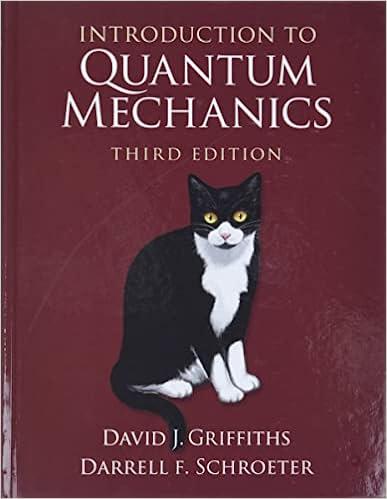In this problem we will recover the results Section 11.2.1 directly from the Hamiltonian for a charged
Question:
In this problem we will recover the results Section 11.2.1 directly from the Hamiltonian for a charged particle in an electromagnetic field (Equation 4.188). An electromagnetic wave can be described by the potentials

where in order to satisfy Maxwell’s equations, the wave must be transverse (E0 . k = 0) and of course travel at the speed of light (ω = c|k|).
(a) Find the electric and magnetic fields for this plane wave.
(b) The Hamiltonian may be written as H0 + H' where H0 is the Hamiltonian in the absence of the electromagnetic wave and H' is the perturbation. Show that the perturbation is given by

plus a term proportional to E20 that we will ignore.
(c) In the dipole approximation we set eik.r ≈ 1. With the electromagnetic wave polarized along the z direction, show that the matrix element for absorption is then
 Compare Equation 11.41. They’re not exactly the same; would the difference effect our calculations in Section 11.2.3 or 11.3? Why or why not?
Compare Equation 11.41. They’re not exactly the same; would the difference effect our calculations in Section 11.2.3 or 11.3? Why or why not?
![]()
![]()
Step by Step Answer:

Introduction To Quantum Mechanics
ISBN: 9781107189638
3rd Edition
Authors: David J. Griffiths, Darrell F. Schroeter





